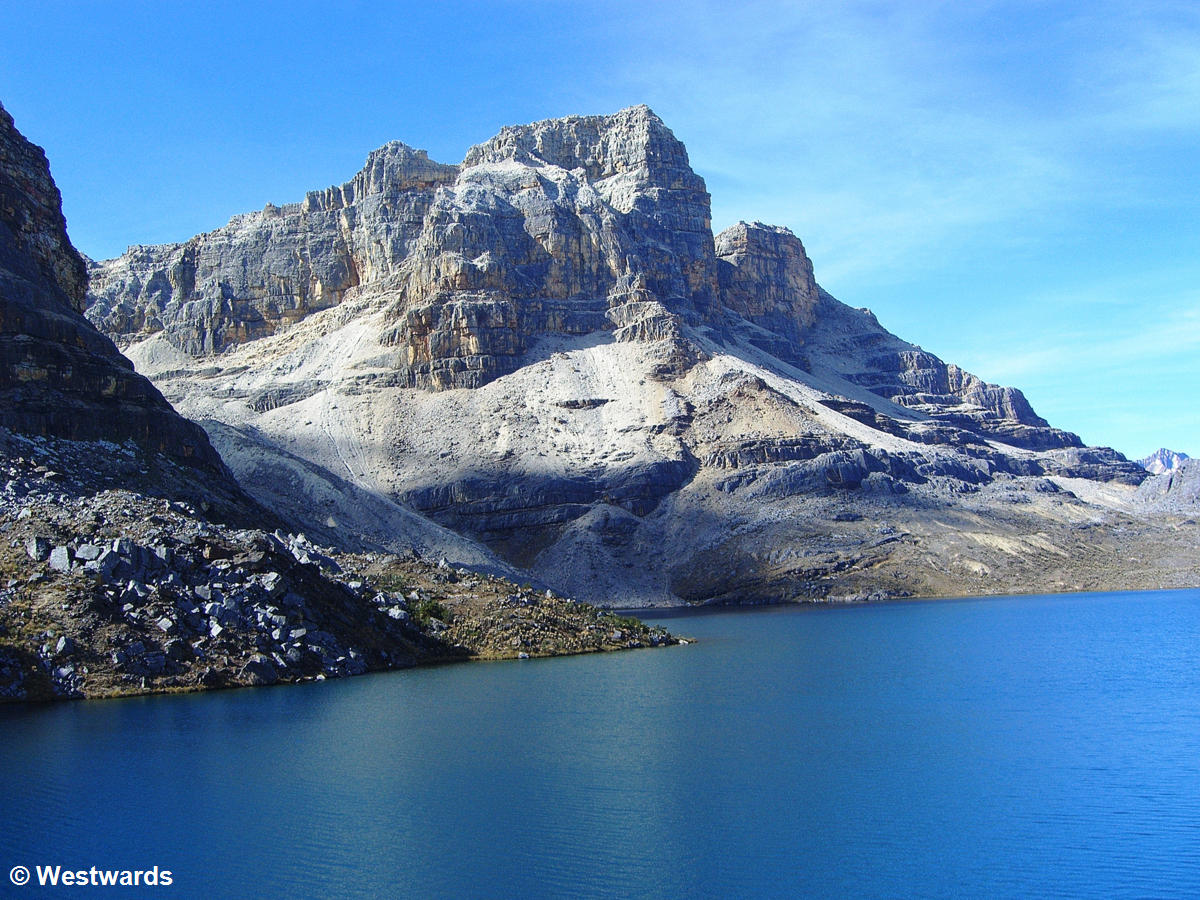
“Si Señora, and a pound of cheese.” The shop assistant takes one of the big round pieces of soft local cheese out of the fridge. It is 5:45 in the morning and still dark when we finish our preparations for the Cocuy hiking trip. But the small grocery store at the plaza in the village of Cocuy is already open and well visited. Men wearing brownish woollen ponchos and quite fashionable brimmed hats are having strong coffee and a sweet Danish pastry before starting their day.

Going up with the milk bus
We pack the cheese carefully in the top pocket of the bag-pack and board the daily milk bus, the only way of transportation to the pastures above Cocuy. The milk bus is a veteran school bus that has four blue 180 litre milk barrels installed in the rear, instead of seats. Apart from the poncho-clad local farmers we are seven tourists on the bus, and as soon as the first snow fields come into view the Columbian family puts on sun lotion and UV filter sun glasses.
The bus stops every few meters and a local with visibly Irish ancestry collects some bottles, buckets or canisters full of fresh creamy milk, while the driver precisely notes down the quantity.
Hiking in the Cocuy National Park
After a bit more than an hour the bus finally drops us at the entrance of the Parque Nacional Natural El Cocuy. At 3700 m, the air is crisp and chilly, and we are looking forward to our hike to the Laguna de la Plaza. “An easy day hike of about seven hours,” the girls at the park office had assured us. Although the path rises very gently, we are soon panting and have to reduce our pace. Maybe it wasn’t such a smart idea to do the trip from the Caribbean coast up into the eastern Cordilleras in just two days, we realize.
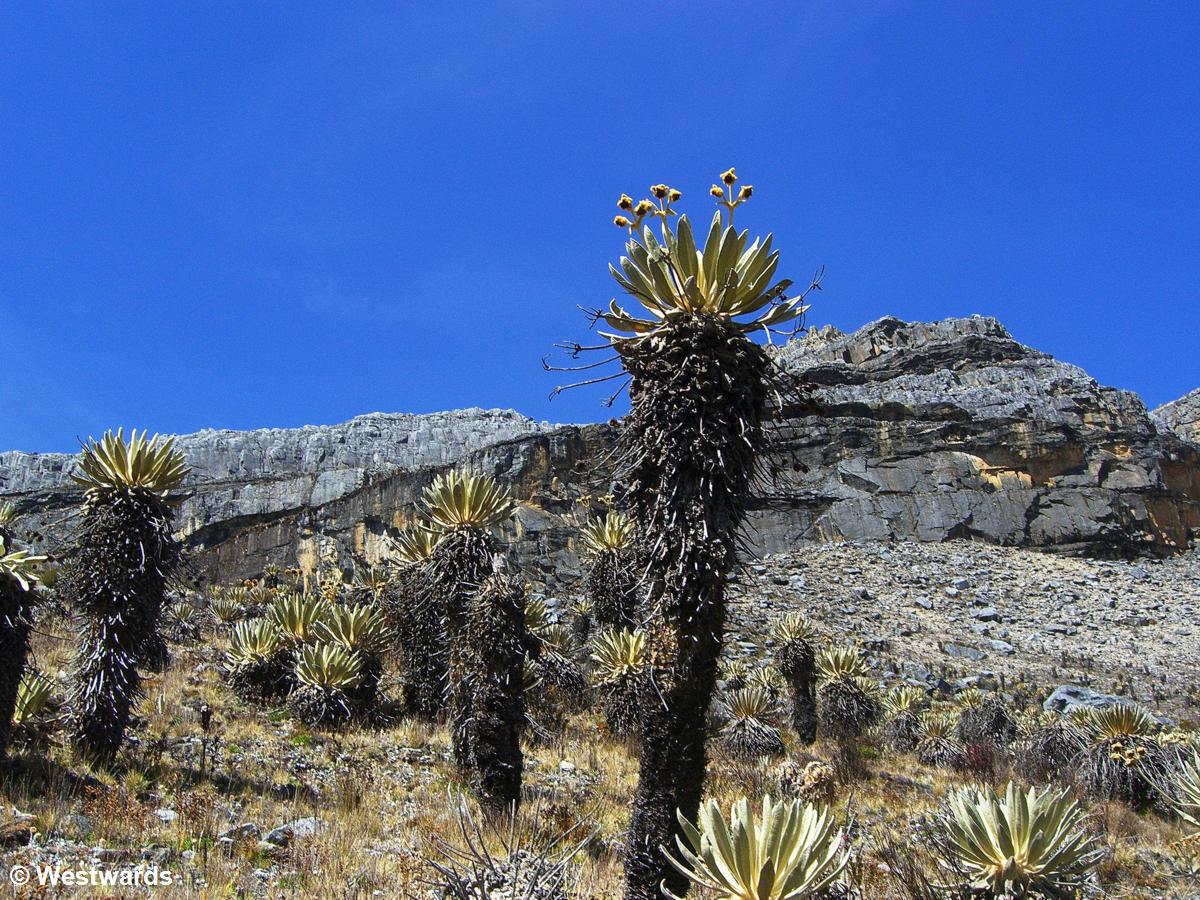
We decide to stop every 30 minutes in order to make sure we drink enough. For a while this plan works out quite well. Between podgy succulents we progress, somewhat short of breath, through the dry mountainous landscape. After about 2 hours the path becomes steeper and we pass some turquoise blue lagoons that have formed in clusters amid swampy yellow pastures. Snow-capped mountains with names like Pan de Azúcar (sugar loaf) and Pulpito del Diablo (devil’s pulpit) peek over the lower crests.
Hiking with a headache

“This evening we can make a great risotto with onions, carrots and this yummy-looking white cheese,” we are still discussing our menu when we begin to notice a faint pressure in the forehead and the sinuses. We shorten our walking-resting rhythm to a ratio of 25:10 minutes and strive for the Cusiri pass, at 4300 m the highest point in our route. Despite the recommended frequent rests and drinking a lot of water we both feel miserable by the time the pass comes into sight. “No, thanks, I don’t feel like eating” Isa faintly declines a cookie. Checking our different maps for the route on the other side of the pass, we find out that the pass is more likely 4500 m high than 4300 m. “Huh, but we aren’t acclimatised!” With the added psychological momentum our stomachs rebel.
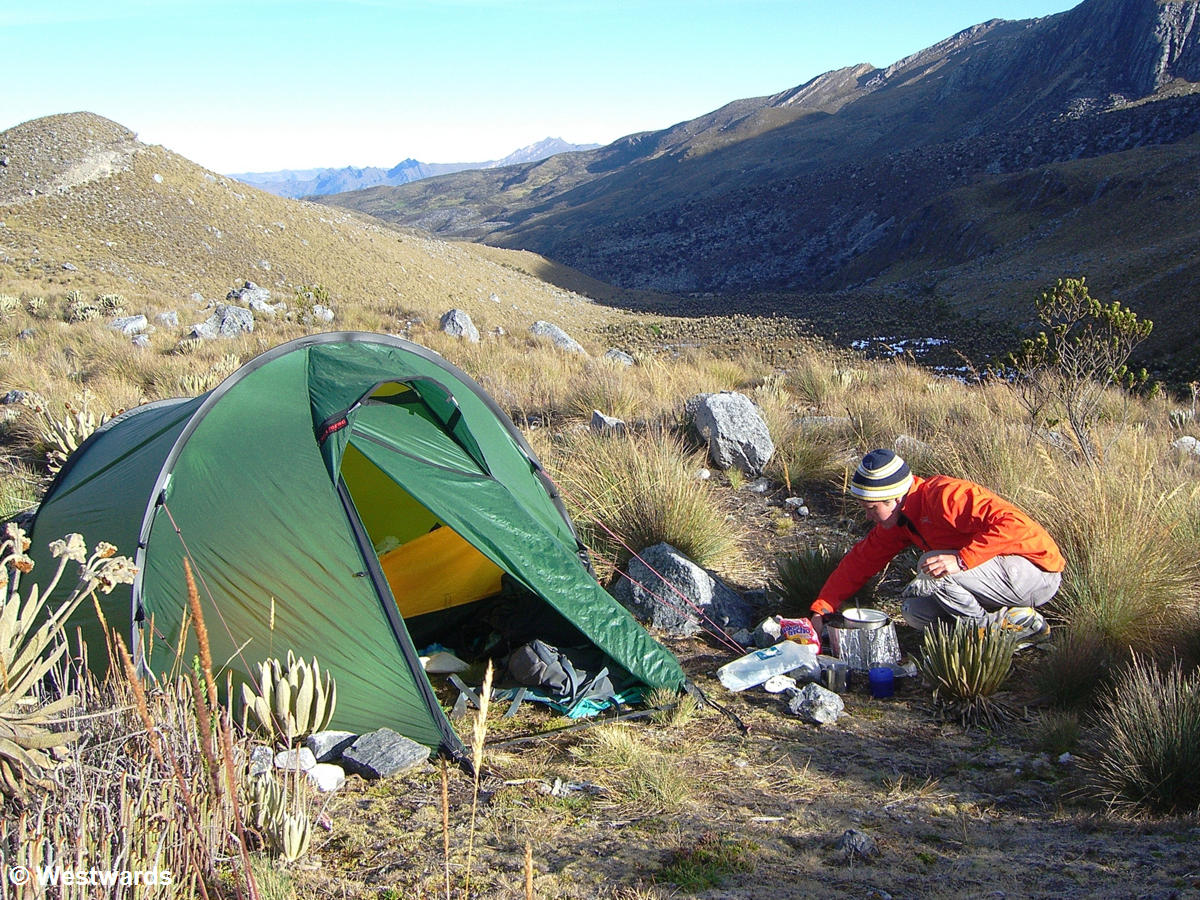
We decide to track back to the small lagoons and to camp there. In about half the time we had needed uphill we reach a nice campsite, but it takes us ages to put up the tent. Every bend forward to fetch something out of the backpack, or even more difficult, to hammer the tent pegs into the ground, leads to sharp pain in the head and a disgusting accumulation of saliva in the mouth. “Urgh, the cheese! I’ll put it here outside the tent!“ The mere thought of risotto makes us feel sick. An hour later we drop onto our thermal mats. “Is this my sleeping bag?,“ Isa asks feebly before nodding off.
Crackers on the Cusiri pass!
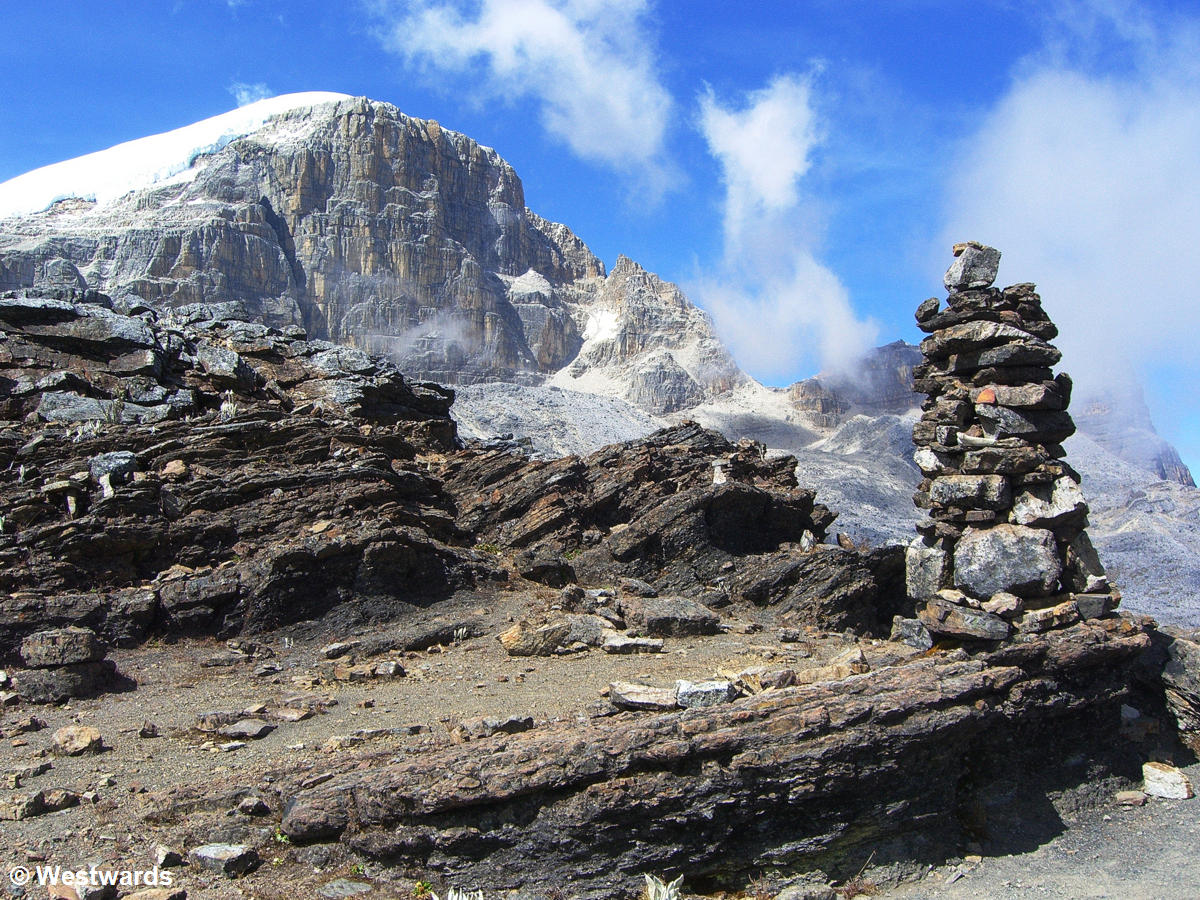
The next morning we feel much better. We find that the word “risotto” evokes positive associations. After a hearty breakfast of porridge and coffee we make a new attempt climbing the Cusiri pass. This time we have enough breath to marvel at the views, and at yesterday’s turning point, we triumphantly eat some crackers.
From the Boqueron Cusiri (the sign posted here gives its height as 4410 m) we descend on a steep gravel path into the next valley and through boggy terrain up to the next mountain pass. Patio Bolas is just 60 m lower than the Cusiri pass. But it seems we are now acclimatised: We feel still fine and can enjoy the yellow and red shrubs and cactuses. Nevertheless it takes us about 6 hours to reach the Laguna de la Plaza at 4300 m. We are glad when we can pitch our tent at the designated campsites at the shore. A handful of other people hiking the Cocuy circuit have also arrived with their tents.
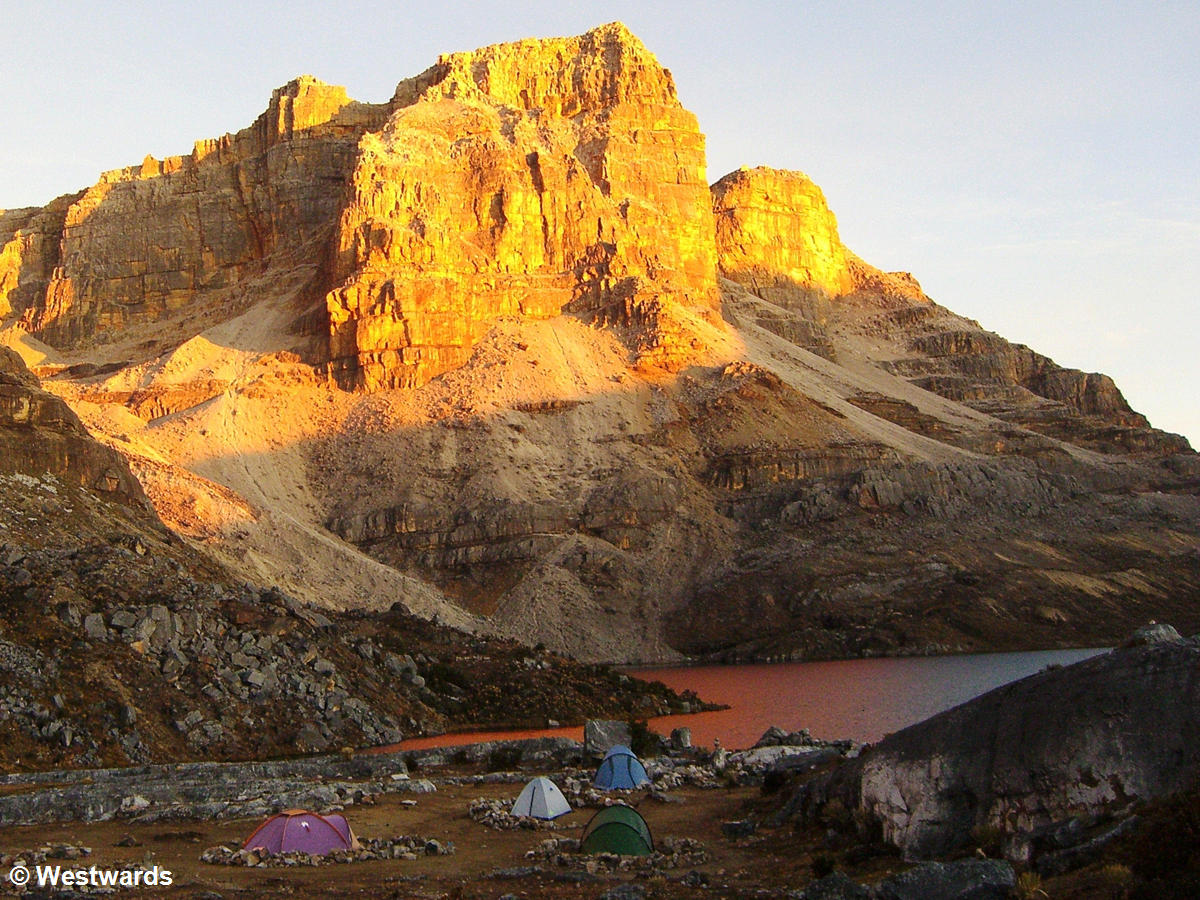
This evening we have a delicious risotto, and although the temperatures go below zero during the night we sleep very well.
The next day we hike all the way back to the road, where the milk bus passes in the morning and brings us to the village of Guican, from where we take another bus back to Cocuy.
NB: Our El Cocuy hiking trip was not sponsored in any way. We paid all expenses ourselves.


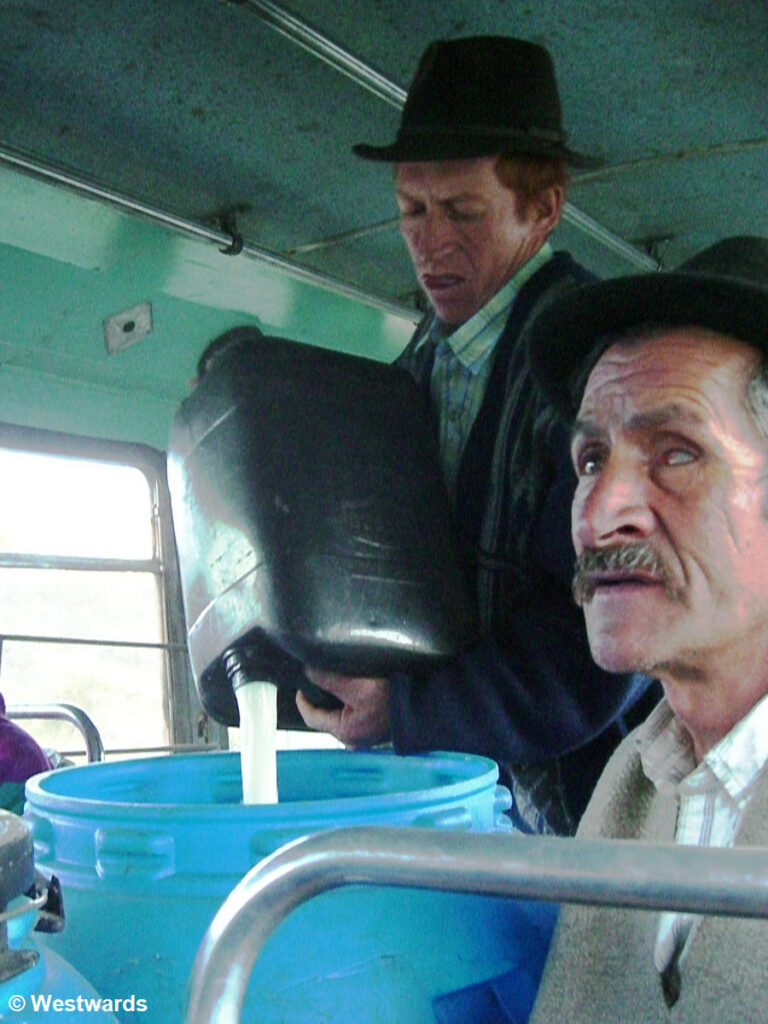



Hi there, travelling girls. Your photos are always so spectacular, wow! Your blog reminds me, what a beautiful place our planet is. Thank you for that!
As for the uncomfortable parts as the heat, the freezing cold, the insects, the weird food sometimes and the altitude sickness, well, thats not in the pics…
Sometimes I wonder – will you ever get settled down again? Maybe not. Maybe we will be able to follow Nandis Blog Around the World forever. Something like Dylans Neverending Tour, I guess.
Take care and stay healthy and happy!
Martina
Good story. I was laughing with you about going from sea level to 4000 m in two days, having experienced a similar situation in Ecuador 30 years ago. Even when I had spent two months at 6000-9000 feet, I found out that a week at sea level ruined my acclimation when I returned to the mountains. Good to hear that you were able to surmount it. I loved my time in the Andes. Salud!